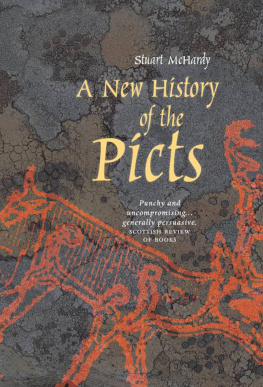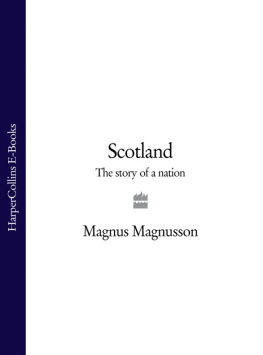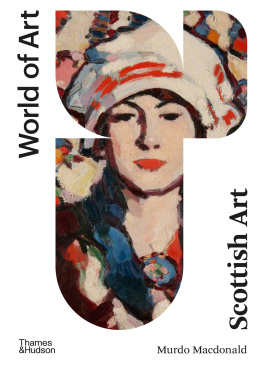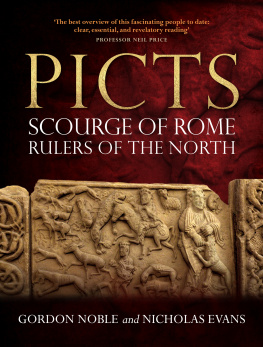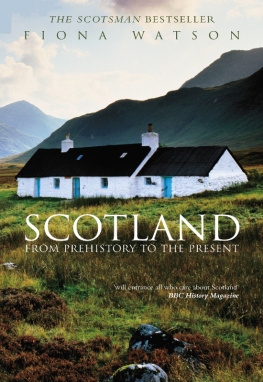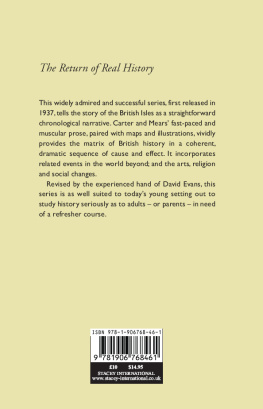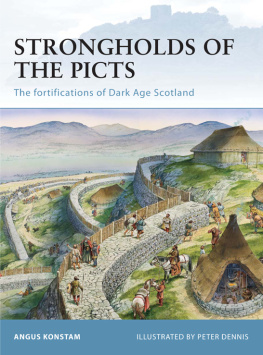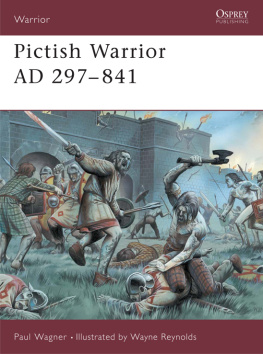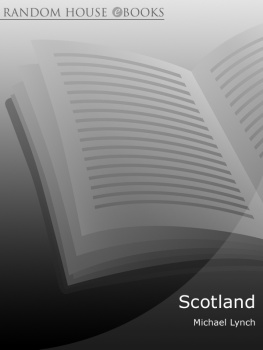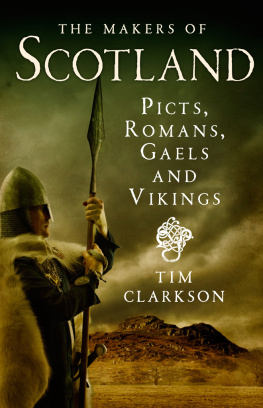
STUART MCHARDY is a writer, musician, folklorist, storyteller and poet, and has lectured on many aspects of Scottish history and culture both in Scotland and abroad. Combining the roles of scholar and performer gives McHardy an unusually clear insight into tradition. As happy singing old ballads as analysing ancient legends, he has held such posts as Director of the Scots Language Resource Centre and President of the Pictish Arts Society. McHardy is a prolific author, and has had several books published, including Tales of the Picts , Tales of Edinburgh Castle , The Quest for the Nine Maidens , On the Trail of Scotlands Myths and Legends and Edinburgh and Leith Pub Guide . McHardy lives in Edinburgh with his wife Sandra.

Dull Stone
Digitally enhanced image from photograph by Noble.

First published 2010
This edition 2011
eISBN: 978-1-912387-80-9
The publisher acknowledges subsidy from

towards the publication of this book.
The paper used in this book is recyclable.
It is made from low-chlorine pulps produced in a low-energy, low-emissions manner from renewable forests.
Printed and bound by
CPI Antony Rowe, Chippenham
Map by Jim Lewis
Cover images: Man and horse from a rubbing of the Martin Stone
by Marianna Lines; stag image from the Grantown Stone.
Typeset in 10.5pt Sabon by
3btype.com
The authors right to be identified as author of this book under the Copyright, Designs and Patents Acts 1988 has been asserted.
Stuart McHardy 2010
Acknowledgements
While all the ideas in this book are mine I would like to thank a variety of people for their assistance in bringing this book to print. My friends in the Pictish Arts Society have, over many years, through the course of often vigorous debate, helped to clarify my own thinking and in particular I would like to thank Sheila Hainey, Marianna Lines and Molly Rorke. Likewise many of my students over the years have helped me see things clearer, most notably Tim Walkingshaw. Dr Dauvit Broun of Glasgow University was kind enough to let me see a pre-publication version of his 2008 paper in the Bibliography, and Dr Brian Moffat of the Soutra Trust was extremely helpful in matters concerning the miracle food, the Kale Pea. My editor Alice Jacobs was a delight to work with and my son Roderick was of great assistance in amending the text. Thanks are as ever due to my wife Sandra for her continual support and encouragement. Finally thanks go to Gavin MacDougall of Luath Press for his continued support for Scottish culture at all levels and to all the staff of Luath; Leila, Senga, Anne, John-Paul, Christine and Jo, who worked hard to make it all happen.
Contents

Map locations
| Abercorn | site of short-lived seventh century Northumbrian bishopric. |
| Aberlemno | location of significant symbol stones. |
| Abernethy | possible Pictish capital and early Christian site. |
| Antonine Wall | Roman wall across Central Scotland |
| Anwoth | furthest south example of Pictish symbols. |
| Balbridie | Third Millennium BCE timbered hall. |
| Bennachie | significant mountain with ancient monuments. |
| Carpow | Roman site on the Tay near Abernethy. |
| Collessie | location of carved stone with warrior. |
| Covesea | cave with symbols and First Millennium links to Europe. |
| Cramond | Roman villa. |
| Dingwall | Highland town. |
| Dumbarton | capital of Strathclyde Britons. |
| Dumyat | fort of the Maetae. |
| Dunachton | possible site of battle in 685CE against Northumbrians. |
| Dunadd | capital of Dalriada. |
| Dundurn | Dalriadan fort |
| Dunkeld | important Pictish religious centre from early ninth century. |
| Dunnichen | possible site of battle in 685CE against Northumbrians. |
| Dunnottar | major fortified site. |
| Edinburgh | capital of the Gododdin, Dun Etain. |
| Eigg | site of martyrdom of St Donann. |
| Forres | site of death of king Dub. |
| Forteviot | ancient prehistoric site important into ninth century at least. |
| Gask Ridge | possible site of Romans first attempt at frontier. |
| Govan | important early Christian site in Strathclyde. |
| Inverdovat | site of death of king Constantine c.877 |
| Inverness | capital of Bridei mac Maelchon visited by St Columba. |
| Iona | home of the Columban church. |
| Kilmartin Glen | pre-Christian sacred site for millennia. |
| Moncrieffe Hill | possible site of battle c.728. |
| Portmahomack | site of recently excavated Pictish monastery. |
| St Andrews | important early Christian site. |
| Stirling | strategic hilltop site at the centre of Scotland. |
| Traprain Law | possible capital of the Votadini, later the Gododdin. |
| Whithorn | important early Christian site, St Ninian. |
Preface
Since the Union (of 1707) the writing of the history of Britain has been a more or less political process, the viewpoint of the historian depending on the individuals position on the meaning and consequences of the Union and on the process of securing the creation of North Britain and South Britain A small country sharing a small island with a world power will never have a quiet life (as Pierre Trudeau described Canadas relationship with the USA as being in bed with an elephant).
[Barclay 2002]
THE RESULT OF THE process described by Barclay has been that much of Scottish history is effectively Anglocentric. The needs of the British state to have a cohesive past have over-ridden much of the reality of Scottish history. This process has been well described in the remarkable The Very Bastards of Creation by James D Young, in which he looks at Scottish Radicalism in the period from 1707 to the close of the 20th century. As the recent work by Doron Zimmerman [2003] has shown, there is still a great deal to be understood about even as recent a Scottish historical phenomenon as Jacobitism. The dominant thrust of Scottish history writing has been to stress the similarities between Scotland and England by downgrading the differences.
Next page
